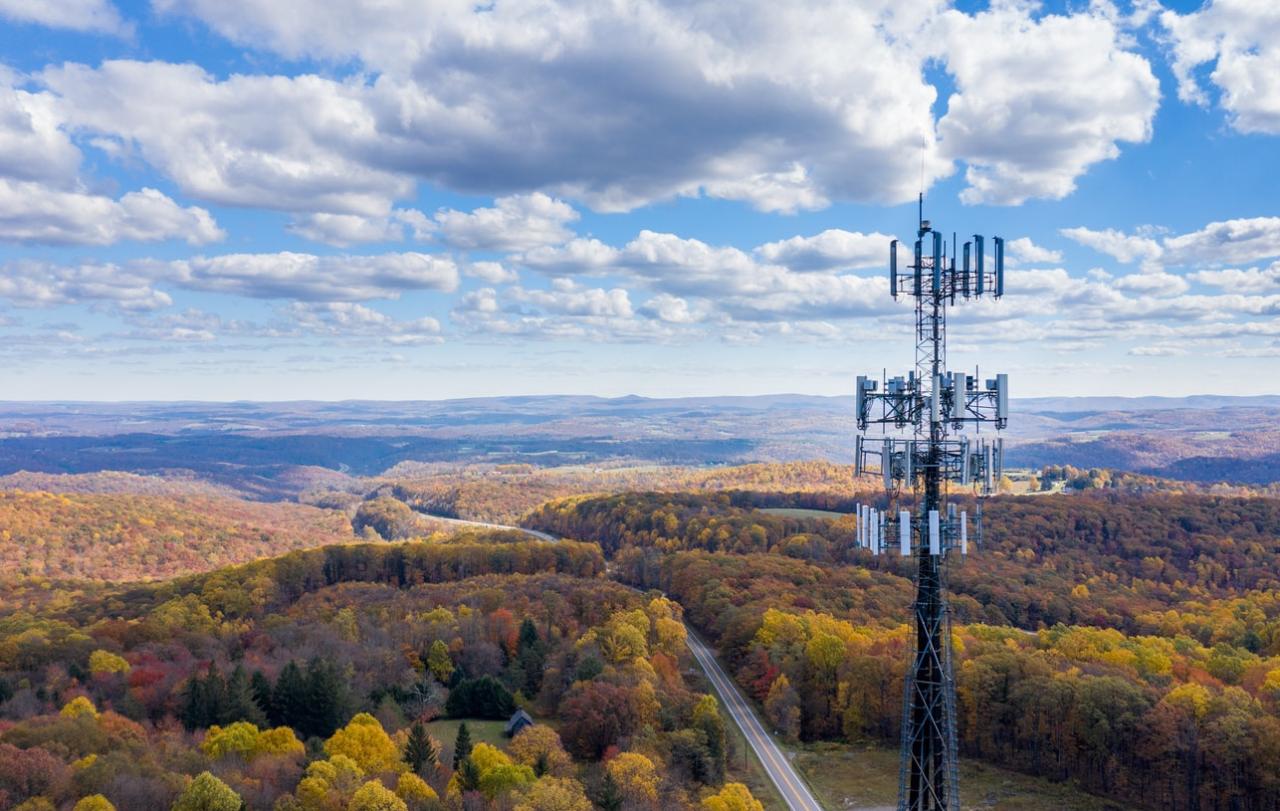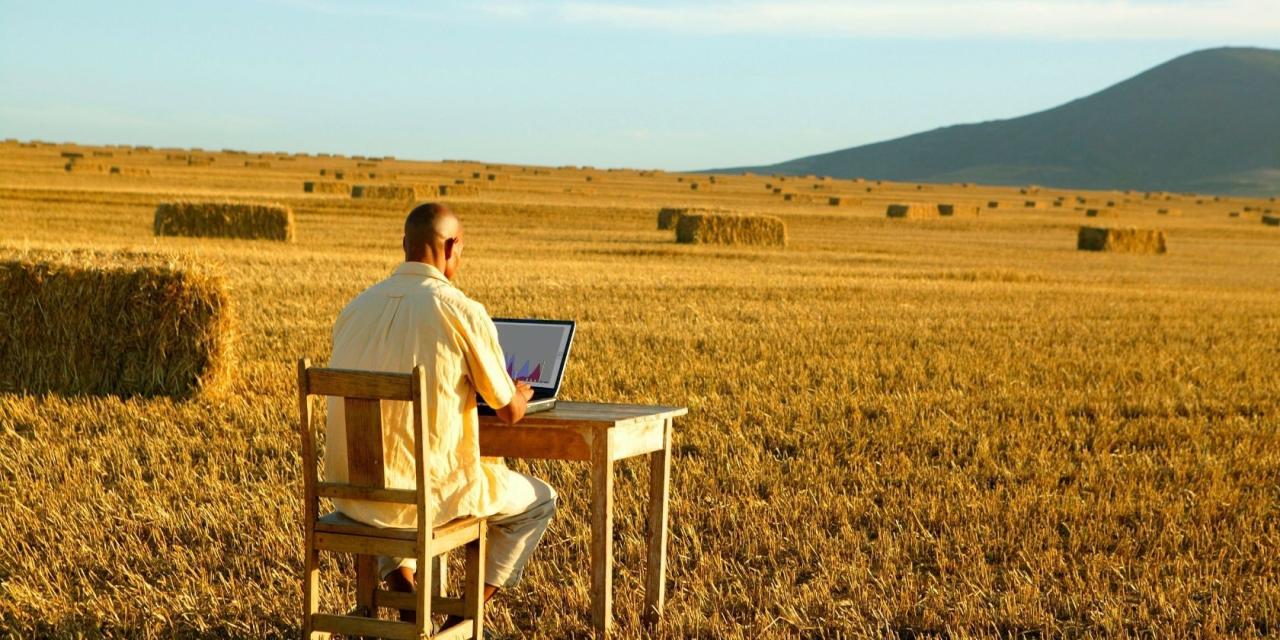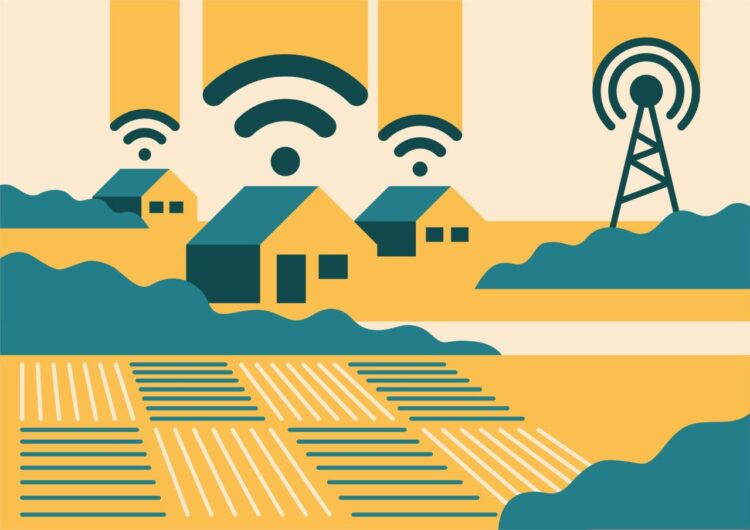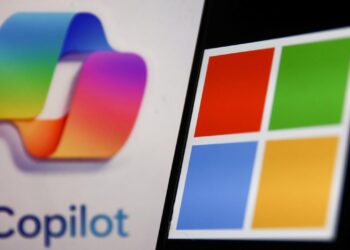In an increasingly digitized world, access to reliable and affordable internet connectivity is no longer a luxury but a fundamental necessity. While urban centers have long enjoyed the benefits of high-speed broadband, rural connectivity has often lagged, creating a significant digital divide. However, a transformative shift is underway globally, with concerted efforts to bridge this gap. The expansion of rural connectivity is not merely about providing internet access; it’s a powerful catalyst for economic development, social inclusion, educational equity, and improved quality of life in previously underserved areas. This comprehensive article delves into the critical importance of rural internet, the innovative technologies and strategies driving its expansion, the profound benefits it unlocks, and the persistent challenges that still need to be addressed to achieve truly universal access.
The Imperative of Rural Connectivity

For decades, rural communities worldwide have grappled with limited or non-existent internet access, leading to a myriad of disadvantages. The absence of robust connectivity perpetuates economic stagnation, limits access to essential services, and isolates communities. Recognizing this, the drive to expand rural connectivity has become a global priority, viewed as crucial for equitable development.
The necessity of robust rural internet access stems from several key factors:
A. Economic Empowerment: Access to the internet enables rural businesses to reach wider markets, leverage e-commerce platforms, manage supply chains more efficiently, and access online financial services. It also fosters the growth of new digital industries in these areas, creating jobs and stimulating local economies.
B. Educational Equity: High-speed internet is vital for modern education, facilitating online learning, access to digital resources, and remote educational tools. Without it, rural students and educators are at a significant disadvantage, widening the educational gap between urban and rural areas.
C. Healthcare Access and Quality: Telemedicine, remote diagnostics, and online health information are revolutionizing healthcare delivery. Expanding connectivity to rural areas allows residents to access specialist consultations without long-distance travel, improves emergency response capabilities, and supports remote monitoring of patients, ultimately saving lives and improving health outcomes.
D. Social Inclusion and Community Building: Internet access connects rural residents to broader social networks, enables participation in online community forums, and provides access to diverse information and entertainment. It combats social isolation and strengthens community bonds by facilitating communication.
E. Enhanced Government Services: Digital government services, such as applying for permits, accessing public records, and receiving critical alerts, become more accessible to rural citizens, improving transparency and efficiency in governance.
F. Agricultural Modernization: Farmers can leverage real-time market data, precision agriculture technologies (e.g., IoT sensors for soil monitoring), weather forecasting, and online platforms for selling produce, leading to increased productivity and profitability.
G. Disaster Preparedness and Response: Reliable communication networks are crucial during emergencies and natural disasters, enabling early warning systems, coordinated relief efforts, and timely information dissemination to affected communities.
In essence, rural connectivity is a foundational element for bridging the socio-economic disparities that have historically separated rural and urban populations, ensuring that no community is left behind in the digital age.
Technological Advancements Driving Expansion
The progress in rural connectivity is largely thanks to a convergence of innovative technologies and evolving deployment strategies that overcome the challenges of sparse populations and challenging terrains.
A. Satellite Internet:
A.1. Low Earth Orbit (LEO) Satellites: Companies like SpaceX’s Starlink, OneWeb, and Amazon’s Project Kuiper are deploying constellations of thousands of LEO satellites. These satellites orbit much closer to Earth than traditional geostationary satellites, drastically reducing latency (the time delay in data transmission) and significantly increasing speeds, making satellite internet a viable, high-performance option for even the most remote areas.
A.2. Traditional Geostationary (GEO) Satellites: While higher latency, GEO satellites still play a role, especially for backhaul (connecting rural towers to the core network) and for regions where LEO infrastructure is not yet established.
B. Fixed Wireless Access (FWA):
B.1. 5G FWA: Leveraging cellular infrastructure, FWA delivers broadband internet to homes and businesses wirelessly from a fixed base station. The advent of 5G technology has significantly boosted FWA speeds and capacity, making it a compelling alternative to fiber in less dense areas. It uses dedicated spectrum bands to provide robust connections.
B.2. 4G LTE FWA: Before 5G, 4G LTE-based FWA was already a popular solution, offering decent speeds where wired options were impractical. Many existing rural deployments leverage this technology.
C. Fiber Optic Networks (FTTX – Fiber-to-the-X):
C.1. Fiber-to-the-Home (FTTH): While often cost-prohibitive for sparsely populated areas due to trenching and installation expenses, governments and private companies are making strategic investments to extend fiber backbone networks further into rural regions. This often involves subsidies or public-private partnerships. Fiber offers the highest speeds and greatest future-proofing.
C.2. Fiber-to-the-Cabinet/Node (FTTC/N): Bringing fiber closer to the community and then using existing copper lines for the “last mile” connection, a more cost-effective interim solution.
D. White Space Technology:
D.1. TV White Spaces (TVWS): Utilizing unused frequencies in the television broadcast spectrum (often referred to as “white spaces”) to deliver wireless broadband over long distances, even through obstacles like foliage. This technology is particularly promising for connecting very remote villages and for IoT applications in agriculture.
E. Hybrid Approaches:
E.1. Integrated Solutions: The most effective rural connectivity strategies often involve a hybrid approach, combining satellite for very remote areas, FWA for slightly less dense regions, and strategic fiber deployment to connect core community hubs or act as backhaul for wireless networks.
These technological advancements, coupled with innovative deployment models, are steadily eroding the barriers that once made rural broadband expansion seem insurmountable.
Strategies for Effective Rural Broadband Deployment

Technological capabilities alone are insufficient; successful rural connectivity expansion requires deliberate strategic planning and execution.
A. Public-Private Partnerships (PPPs):
A.1. Risk Sharing: PPPs distribute the financial burden and operational risks between government entities and private telecommunication companies. Governments can provide subsidies, land access, or regulatory support, while private companies bring capital, technical expertise, and operational efficiency.
A.2. Infrastructure Sharing: Promoting models where multiple service providers can utilize the same infrastructure (e.g., towers, fiber ducts) to reduce duplication of effort and lower overall costs.
B. Regulatory Frameworks and Incentives:
B.1. Universal Service Obligations (USOs): Governments can mandate that telecom providers contribute to funds or provide services in underserved areas as part of their licensing agreements.
B.2. Subsidies and Grants: Direct financial aid or tax incentives for companies investing in rural infrastructure development.
B.3. Streamlined Permitting: Simplifying and expediting the process for obtaining permits for tower construction, fiber laying, and other infrastructure projects.
B.4. Spectrum Allocation: Allocating specific radio frequency bands for rural broadband use at favorable terms to encourage deployment.
C. Community Engagement and Needs Assessment:
C.1. Local Buy-In: Engaging local communities early in the planning process to understand their specific needs, identify optimal deployment locations, and secure support for infrastructure projects.
C.2. Digital Literacy Programs: Complementing infrastructure rollout with initiatives to educate rural residents on how to use the internet effectively and safely, ensuring adoption and maximizing benefits.
D. Focus on Affordability:
D.1. Subsidized Services: Programs to help low-income households in rural areas afford internet subscriptions.
D.2. Tiered Pricing Models: Offering various service packages to cater to different budget levels and usage needs.
D.3. Public Access Points: Establishing community Wi-Fi hotspots in public spaces like libraries, schools, and community centers.
E. Data-Driven Planning:
E.1. Broadband Mapping: Accurately mapping existing internet coverage gaps to identify underserved areas and prioritize deployment efforts.
E.2. Impact Assessment: Regularly evaluating the social and economic impact of connectivity projects to refine strategies and demonstrate value.
These strategies, when implemented thoughtfully, create an enabling environment for sustainable and equitable rural broadband expansion.
Profound Benefits and Transformations
The expansion of rural connectivity triggers a cascade of positive transformations, fundamentally altering the fabric of rural life:
A. Economic Development and Diversification:
A.1. New Business Opportunities: Emergence of online businesses, remote work hubs, and digital service providers in rural areas.
A.2. Increased Productivity: Businesses can streamline operations, access cloud-based tools, and participate in global markets.
A.3. Tourism Boost: Online marketing, booking platforms, and digital navigation enhance rural tourism sectors.
A.4. Agricultural Innovation: Adoption of precision farming, IoT in agriculture, and direct-to-consumer sales channels for farmers, leading to higher yields and better market access.
B. Enhanced Education and Skill Development:
B.1. Access to Online Learning: Rural students gain access to MOOCs, virtual classrooms, and specialized online courses, broadening their educational horizons.
B.2. Teacher Development: Educators can access professional development resources, collaborative platforms, and updated pedagogical materials.
B.3. Digital Literacy: Increased overall digital literacy within communities, preparing residents for the demands of the modern workforce.
C. Improved Healthcare Outcomes:
C.1. Telemedicine Adoption: Remote consultations, virtual diagnoses, and e-prescribing reduce the need for travel to urban hospitals, saving time and money.
C.2. Remote Monitoring: Wearable devices and connected health tools enable continuous monitoring of chronic conditions, leading to proactive care.
C.3. Health Information Access: Rural residents can research health conditions, access reputable medical advice, and connect with support groups online.
D. Strengthened Social Fabric and Civic Engagement:
D.1. Reduced Isolation: Connecting geographically dispersed family members and friends, reducing feelings of isolation.
D.2. Community Building: Online forums and social media groups foster local community discussions, organizing events, and civic participation.
D.3. Access to Information: Greater access to news, diverse perspectives, and cultural content, enriching local life.
E. Environmental and Sustainability Benefits:
E.1. Reduced Commuting: Remote work options decrease the need for daily commutes, lowering carbon emissions.
E.2. Optimized Resource Use: Smart agriculture and smart grid technologies enabled by connectivity lead to more efficient use of water, energy, and other resources.
E.3. Digital Documents: Reduced reliance on paper, contributing to conservation efforts.
F. Increased Safety and Security:
F.1. Emergency Services: Enhanced communication for police, fire, and ambulance services, leading to faster response times.
F.2. Disaster Warnings: More effective dissemination of alerts during natural disasters, improving preparedness and saving lives.
F.3. Remote Surveillance: Deployment of security cameras and monitoring systems in remote areas for enhanced safety.
These transformations underscore that rural connectivity is not just about technology rollout, but about fostering a more equitable, prosperous, and resilient society.
Persistent Challenges and Future Outlook
Despite significant progress, the journey to universal rural connectivity is not without its hurdles. Addressing these challenges is paramount for sustained success.
A. High Costs and Return on Investment (ROI):
A.1. Sparse Population Density: The cost per subscriber to deploy infrastructure in rural areas is often significantly higher due to fewer customers spread over vast geographies, making ROI difficult for private companies alone.
A.2. Difficult Terrain: Mountains, forests, and remote islands increase construction complexity and expense for fiber and tower deployment.
B. Regulatory and Policy Gaps:
B.1. Inconsistent Policies: Lack of long-term, stable government policies and funding commitments can deter private investment.
B.2. Permitting Bureaucracy: Cumbersome and lengthy permitting processes for infrastructure can cause significant delays and increase costs.
A.3. Digital Inclusion Policies: Ensuring policies not only support infrastructure but also address affordability and digital literacy for all segments of the rural population.
C. Skill Gaps and Workforce:
C.1. Lack of Skilled Labor: Shortage of technicians and engineers trained in deploying and maintaining advanced broadband infrastructure in rural areas.
C.2. Digital Literacy Barriers: Even with infrastructure, a lack of digital skills can limit adoption and effective use of the internet among some rural residents.
D. Maintenance and Resilience:
D.1. Infrastructure Vulnerability: Rural infrastructure can be more susceptible to damage from extreme weather events or lack of maintenance due to remoteness.
D.2. Power Supply: Ensuring reliable power sources for remote base stations and equipment can be a challenge.
E. Competition and Market Dynamics:
E.1. Dominant Players: Large telecom companies might prioritize profitable urban markets, leaving smaller providers to tackle rural areas with limited resources.
E.2. Lack of Competition: In some rural areas, a single provider might exist, leading to higher prices and lower quality of service.
The future of rural connectivity will likely involve:
- Continued LEO Satellite Expansion: As more constellations become fully operational and prices potentially decrease, LEO satellite internet will become an even more pervasive solution for the remotest areas.
- 5G mmWave and Sub-6 GHz FWA: Further advancements and wider deployment of 5G FWA will make it a robust competitor to fiber in many rural settings.
- Increased Focus on Open Access Networks: Governments and communities may increasingly promote “open access” fiber networks, where infrastructure is built and then leased to multiple service providers, fostering competition and reducing prices.
- Blended Funding Models: Greater reliance on hybrid funding models, combining public subsidies, private investment, and community-led initiatives.
- AI and Automation in Network Management: Leveraging AI for network optimization, predictive maintenance, and efficient resource allocation in vast rural networks.
- Digital Inclusion Programs: A sustained emphasis on digital literacy, device affordability, and content creation relevant to rural communities to ensure actual adoption and benefit realization.
Conclusion
The global commitment to universal connectivity, coupled with relentless technological innovation and strategic policy interventions, paints a promising picture for the future of rural areas. The digital divide is shrinking, slowly but surely, paving the way for a more connected and equitable world.











